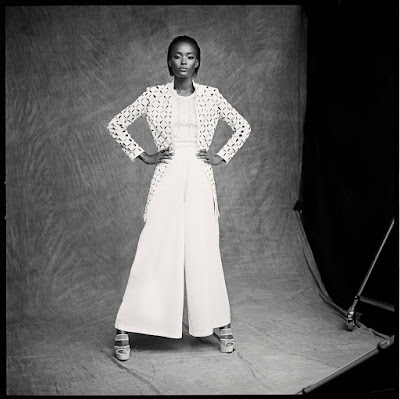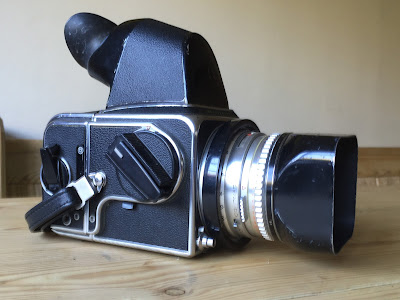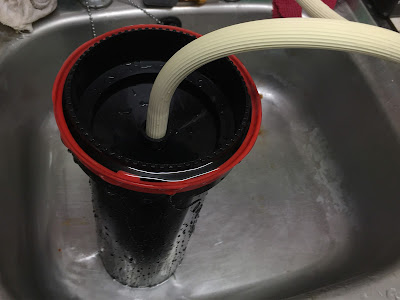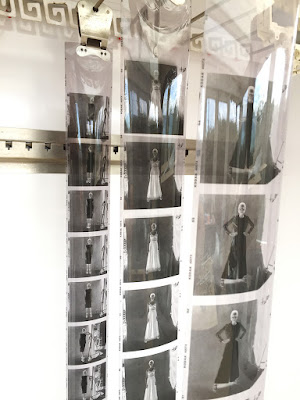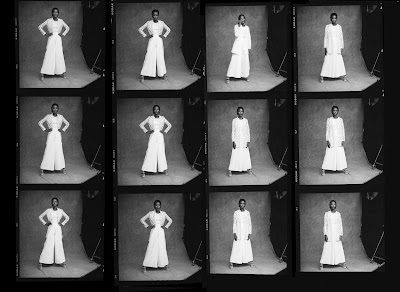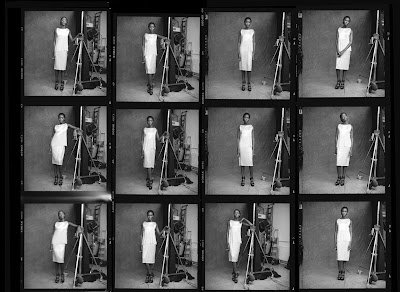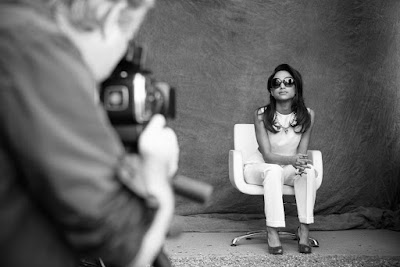I was really Looking forward to shooting this fashion shoot, I bought loads of film for it, the idea was to shoot everything on film ( Kodak Tri X rated at 400 asa ) and shoot some back-up with digital and since we had the Canon 5d's with us, we'd also shoot some moving image.
When I arrived at the studio, I found out that we had 10 outfits to shoot, which is a lot, I was expecting 6 max, so I reluctantly decided that the only way to get through this lot on time was to shoot digitally but the good news is - I did manage to fit in 3 rolls of film and now have loads of film left over for my next shoot : )
Here's some of the images that I did shoot on film. ( click on the photo to see larger versions )
So I dusted down the Hasselblads for the shoot, it was nice to give them an airing again. The studio was really small so I had to shoot on a standard lens, normally I would use a 150mm for this kind of work. I shot these photos using available daylight in the studio and ended up having to shoot at a shutter speed of a 15th as it was a dull day and not much light around. A 15th isn't great for shooting fashion especially with a hasselblad with that big mirror clunking away in every shot, It might have been better to use my Rollei since it doesn't have a mirror, although in saying that, I'm happy with the results and like the softness and the movement in some of the shots : )
These are my Hasselblads that I used for the shoot 501 el/m and a 501.
Here's some shots of the film in the wash, coming out of the developing tank and into the dryer, I'll try to video some of the stages in future for those of you interested in getting into film.
And here are 3 contact sheets from the film.
When I arrived at the studio, I found out that we had 10 outfits to shoot, which is a lot, I was expecting 6 max, so I reluctantly decided that the only way to get through this lot on time was to shoot digitally but the good news is - I did manage to fit in 3 rolls of film and now have loads of film left over for my next shoot : )
Here's some of the images that I did shoot on film. ( click on the photo to see larger versions )
So I dusted down the Hasselblads for the shoot, it was nice to give them an airing again. The studio was really small so I had to shoot on a standard lens, normally I would use a 150mm for this kind of work. I shot these photos using available daylight in the studio and ended up having to shoot at a shutter speed of a 15th as it was a dull day and not much light around. A 15th isn't great for shooting fashion especially with a hasselblad with that big mirror clunking away in every shot, It might have been better to use my Rollei since it doesn't have a mirror, although in saying that, I'm happy with the results and like the softness and the movement in some of the shots : )
These are my Hasselblads that I used for the shoot 501 el/m and a 501.
Here's some shots of the film in the wash, coming out of the developing tank and into the dryer, I'll try to video some of the stages in future for those of you interested in getting into film.
And here are 3 contact sheets from the film.


